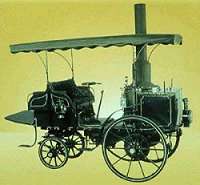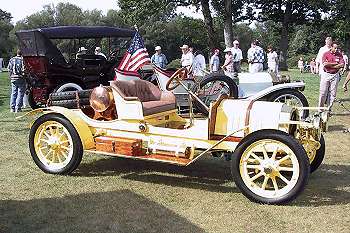| SPAIN.
Epelsa - Mobba issues 2OO1 |
54 |
Coches
de época ( 5 ). DE DION BOUTON B.S. (CASC)
/
Vintage
cars ( 5 ). DE DION BOUTON B.S. (CASC) |
 |
|
Date
of issue :
|
|
November
2001
( 1st. date of use : 16.11.01, Phil. Service
) |
|
|
|
47 x 26 mm.
- Format type 3 |
|
Paper
:
|
|
Thermal self
adhesive - multicoloured |
|
Imprint
:
|
|
Thermal on
black |
| Imprint
varieties : |
|
6 ( Mobba
(1)
and Epelsa 4 (1), 5 (2),
6 (2) digits ) |
|
Values
/ Set :
|
|
1
to 999999 PTS / Set
values : 30 - 40 - 75 PTS
( Available printing
varieties and values in the date of issue ) |
|
Design
and Printer :
|
|
 RCM-FNMT.
Real Casa de la Moneda - Fábrica
Nacional de Moneda y Timbre
RCM-FNMT.
Real Casa de la Moneda - Fábrica
Nacional de Moneda y Timbre |
|
Printing
:
|
|
50.000.000
of labels |
|
| Click
on the image to enlarge it |
Fifth issue of the
ATM set dedicated to the vintage cars.
 |
The
Count
Albert de Dion-le Val, the miniaturist Georges Bouton
and his good friend the engineer Charles-Armand Trépardoux
had begun to produce steam vehicles in 1883.
In the first racing cars
in the history, the Paris-Rouen of 1894, one steam
De Dion-Bouton
was the first vehicle to cross the finnish line.
Ten years before Trépardoux
left the company because many disagreements about the propulsion to use
in future vehicles and De Dion and Bouton decided to continue
the manufacture of vehicles with gasoline motor, that first mounted in
tricycles and later also in four wheels vehicles.
De Dion-Bouton-Trépardoux
"dog-cart" 1885 |
In
1899 it appeared his first model equipped with a motor mono cylinder and
3 1/2 CV; the famous D type or "vis-à-vis",
of which 2,970 units between 1900 and 1902 were sold.
The motor was evolving until
1903, year in which they presented his vehicle with two cylinders and 8
CV.
Two years later it appeared
the model
De Dion of 4 cylinders, with a chassis in U and alveolar
radiator ; they continue also the production of small vehicles mono cylinders
; these voiturettes were extraordinarily popular and constituted
the success and international recognition of the mark. |
 |
In 1910 the French company
presented a totally different style car, the V8 ; one of the first
luxury vehicles that was manufactured in mass.
Few years later, in 1913,
the manufacture of voiturette stopped and the mark initiated
its declivity, living on its reputation mainly and producing buses, taxis,
agricultural vehicles and some luxurious vehicles in reduced number.
In 1927 Peugeot and
Mercedes Benz entered in negotiations for the purchase of the company,
that underwent a deep transformation. The world-wide crisis of beginnings
of 30's deeply affected the company, that in 1933 definitively stopped
the production of tourism vehicles.
Vintage
cars in Spanish philately
|


